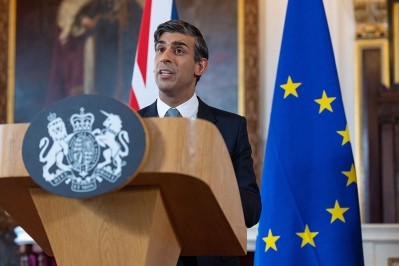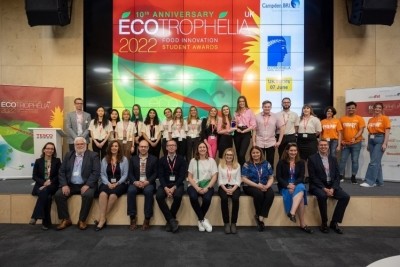Long read
Transforming the food system and where to start
Last week saw around 200 members of the Institute of Food Science and Technology (IFST) come together to discuss how we might ‘tame the perfect storm’.
The ‘storm’ according to IFST comprises challenges in food security, health and nutrition, and the environment.
“Our food systems are facing unprecedented challenges, but we are here today because we believe in the power of food science and technology,” conference chair and food safety and nutrition expert, Barbara Bray, said in her address.
Diet-related disease and sustainable food systems
“Many places are facing the double burden of hunger and obesity, with diet-related diseases rising and the cost to economy estimated to be $2 trillion.
“We’ll need to produce more food than ever before on the basis that rising incomes will also change diets. Managing global security will be key to this.
“The environment will run through most of our conversation today. Our industry urgently needs to adapt to grow food at a scale that doesn’t harm nature.”
Bray referenced the large volumes of land food production has claimed, emphasising that strategies must be put in place to reduce this.
According to a 2019 report from Our World in Data, we only need 30% of farmland to produce the same amount of crops as 1961 due to increasing crop yields. However, with the population growing and differing dietary demands across continents, decreasing our land use will require significant change. A balance between over consumption and malnutrition must be struck.
“Complex problems require complex solutions,” Bray pointed out.
Julie Hesketh-Laird, deputy chief executive at Food Standards Scotland (FSS), echoed similar concerns to Bray as she presented the audience with grim statistics, including that one in seven deaths in the UK are diet-related and the large swathes (85%) of UK land dedicated to animal production.
“I appreciate I am painting a bleak picture, but my aim is to highlight the thorny issues,” she said.
Continuing, she pointed to the huge pressures on the NHS and the imperativeness of improving the population’s health. “It’s never been such a priority,” she noted.
“Health is an economic issue as well as a health issue – it is holding the UK back, whilst we spend money fixing problems.”
To tackle this, Scotland has launched its Good Food Nation strategy, a policy that aims to transform its system by 2025 to be fairer and healthier.
What is the ‘right’ food?
The link between diet and environment has often been cited in headlines, research and policy alike and Hesketh-Laird flagged data shared by the Carbon Trust which found that by following the Eatwell Guide, we’d reduce our environmental impact by 22%. However, she also questioned the complexity behind what the ‘right’ food is.
“Is it the most nutritious, the amount [we eat], the calories? Establishing this will be useful in moving forwards.”
Vicki Jenneson, a research fellow at the University of Leeds specialising in nutrition and retail Big Data, offered the audience some interesting food for thought, as she explained that well-meaning diet-related acts can sometimes have unintended consequences.
One example she presented found a retailer lowering the price of fruit to 60p. While fruit sales rose, the most popular choice was among the tropical variety rather than local.
Another example she gave was a supermarket moving its plant-based ‘meats’ into the meat aisle. The consequence: a drop in plant-based ‘meats’, suggesting that those who enjoy alternatives might not be willing to roam the meat aisle in search of it.
She left the audience with the following question: “What decisions would you make for the food system if you were designing it for you?”
Food system transformation: we need to be more precise about what we want
For speaker John Ingram, food systems programme leader at the University of Oxford, we need to reassess what we mean by ‘system transformation’ – something which, as a sector, we’ve been calling for for some time. He brought up the idea of food system outcomes or ‘what we want’, ‘what we do’ and ‘what we get’, noting that we needed to balance the three.
Expanding on this, he said: “But what does that [system transformation] actually mean – what do I have to do tomorrow to get that? What are we actually trying to transform? It’s not good enough to say we need to transform the sector. The thing we are trying to transform are the food system outcomes – the ‘what we get’, for example, poor diets to balanced diets.”
According to Ingram, this all requires a serious shift in mindset. “We need to think differently about what we want. We need to agree what outcomes are acceptable, what we can live with.” But that, as he noted, begs the question ‘from whose perspective?’
“My view is not the same as your view of your situation,” he elaborated. “And of course, who has to do what, by when and how? The degree of transformation in the outcomes that we see will determine the degree of adaption required in the food system.”
But with this there will be negotiating, he explained. “There will be winners and losers. We need to have clear language so we understand what we’re debating. We don’t want spontaneous change – we are driven by signals, but how do we manage these signals? As soon as transformation comes it changes context because we have a dynamic system. The food systems policy therefore needs to be continually reassessed as the system dynamic unfolds. Today they are formulated on historical trend, but we need to look at it in terms of what is coming down the track.”
Awareness and the skills gap
Among these themes runs the underlying issue of awareness and the skills gap which has widened as a result, a challenge which newly elected IFST president, Sterling Crew, referenced in his opening speech and one in which the audience also raised during the day.
Crew cited Food Manufacture’s most recent Business Leaders Forum, in which respected industry voices highlighted “securing talent” as a major concern. Indeed, without those to take on roles in the sector, there is no food system at all.
In an effort to inspire young people into a food career, the IFST is launching ‘food science and technology week’ – a social campaign which will launch on 5 June 2023.
“We need to go where the young people are – that is online, that is on TikTok and YouTube and less than 60 seconds,” IFST chief executive, Tim McLachlan (featured in above video), stated.
Between 5-9 June, IFST will be encouraging professionals of the food and beverage sector to share their career highlights in a short video using the hashtag ‘foodscitechweek’ to help “plant the seed”.
So what now?
It takes a caterpillar up to five weeks to turn into a butterfly. Transformation is no easy feat and it doesn’t happen easily.
Based on the remarks made at the conference, if we are to transform the food system (…outcomes) we will need to take several actions at the same time, including looking at stepping up education in food and drink, which also involves shouting out about the career opportunities; implementing stronger policies around food security, safety and sustainability which detail ‘what we want’ clearly and are backed by scientific rigor; and employing a continuous review cycle of ‘what we do’ with ‘what we want’.
But nothing changes without action. It’s time to put our money where our mouth is.

















